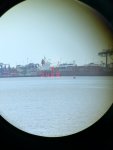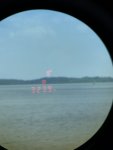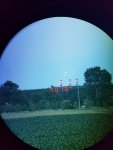Hello, hide!
I hunt and shoot for fun, mostly 800-1500 yards in hunting places, there are no reflecting targets.
For the last few years I have been using the RF Leica-1600, in general it is sufficient, but in bright sunlight it does not measure further than 1100-1200 yards. When the sun is low, there are no problems with trees and boulders up to 1500 yards.
The calculation of the corrections is done through the Kestrel 5700 or the garmin 701, entering the range manually.
I need a range finder that can confidently measure up to 1,500 yards in the bright sun and pass the range to a cestrel or a garmin 701.
Unfortunately, my budget does not allow to take PLRF))).
I expect to spend up to $ 1,200 and now choose between a kilo 2400 BDX and a kilo 3000 BDX.
Kilo 2400 like that it is smaller and lighter, which is more convenient on the hunt.
A kilo of 3000 measures further than 2400, but it is heavier, moreover, I already have hunting binoculars.
The SIG tell that the difference in the measurement of trees between 2400 and 3000 is only 200 yards.
I found this video, from which it follows that 2400 in the sun hardly measures 1400 yards:
I also looked at Leica 2800.com, but 2800.com does not work with the garmin 701.
In addition, the hide guys wrote that 2800.com slowly works with Kestrel and often “falls asleep” at the wrong time.
Question to guys who have the opportunity to compare these RF:
1. Does 3000 really exceed 2400 in the measurement range?
2. Does this superiority matter when measuring up to 1500 yards?
3. It can be expected that the watering can 2800.com will be programmed to work with the garmin 701 and “not to fall asleep while on the move”? ))
Thanks for your advice and opinions!
I hunt and shoot for fun, mostly 800-1500 yards in hunting places, there are no reflecting targets.
For the last few years I have been using the RF Leica-1600, in general it is sufficient, but in bright sunlight it does not measure further than 1100-1200 yards. When the sun is low, there are no problems with trees and boulders up to 1500 yards.
The calculation of the corrections is done through the Kestrel 5700 or the garmin 701, entering the range manually.
I need a range finder that can confidently measure up to 1,500 yards in the bright sun and pass the range to a cestrel or a garmin 701.
Unfortunately, my budget does not allow to take PLRF))).
I expect to spend up to $ 1,200 and now choose between a kilo 2400 BDX and a kilo 3000 BDX.
Kilo 2400 like that it is smaller and lighter, which is more convenient on the hunt.
A kilo of 3000 measures further than 2400, but it is heavier, moreover, I already have hunting binoculars.
The SIG tell that the difference in the measurement of trees between 2400 and 3000 is only 200 yards.
I found this video, from which it follows that 2400 in the sun hardly measures 1400 yards:
I also looked at Leica 2800.com, but 2800.com does not work with the garmin 701.
In addition, the hide guys wrote that 2800.com slowly works with Kestrel and often “falls asleep” at the wrong time.
Question to guys who have the opportunity to compare these RF:
1. Does 3000 really exceed 2400 in the measurement range?
2. Does this superiority matter when measuring up to 1500 yards?
3. It can be expected that the watering can 2800.com will be programmed to work with the garmin 701 and “not to fall asleep while on the move”? ))
Thanks for your advice and opinions!




